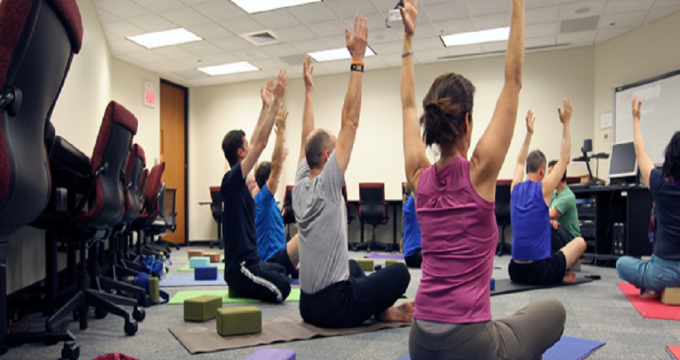
THE labor gymnastics is a set of sports practices practiced in order to avoid pathologies and health problems related to the work environment and work activities, motivating workers to exercise and reducing the stress. Gymnastics at work is often practiced in the workplace itself, and has a short duration, at most one hour.
These practices can be. performed daily and their frequency varies with the availability of. professionals and the location provided by the company.
With the popularization of this gym, managers and entrepreneurs realized that the improvement in the quality of life and of job satisfaction increased the productivity of employees, and consequently, of the company as a whole. There was, then, a change in the priorities of the companies, which began to be more concerned with the work environment they provided to their employees.
We also recommend: Artistic gymnastics.
This set of physical activities emerged in Europe in the 1920s, after the Industrial Revolution, with the consolidation of a new scale production system.
When the work was created, it was called “Break Gymnastics”, and it started to become popular in Polish and Russian factories.
In the late 1920s, Japanese industries. assimilated these practices and their managers perceived their benefits, such as a. reduction of physical and mental strain on employees, increasing a. productivity of them.
In 1968, this practice was implemented in the States. States, gaining great visibility.
This practice arrived in Brazil in 1901. THE. first Brazilian institution to provide labor gymnastics sessions to. its workers was the Bangu Fabric Factory.
Currently, practicing gymnastics at work has become one. common and popular practice in many companies, which are concerned with promoting the. well-being of its employees, as well as promoting interaction among employees. themselves, becoming part of the administrative guidelines of many companies.
The implementation of one. Workplace gymnastics program is also related to the valorization of. employees, the company's interest in the health of its employees, a. valuing quality work, disease prevention and. building a good working environment.
Thus, labor gymnastics. it is also related to quality of life, health maintenance and health. decreased wear and tear caused by work.
Workplace gymnastics can be classified according to the objectives of the exercises and according to the needs of workers:

You can sort them out. modalities of labor gymnastics according to the time of performance of the. Exercises:
See more:
Subscribe to our email list and receive interesting information and updates in your email inbox
Thanks for signing up.


